Lalitesh Morishetti
Improving Sequential Recommender Systems with Online and In-store User Behavior
Dec 03, 2024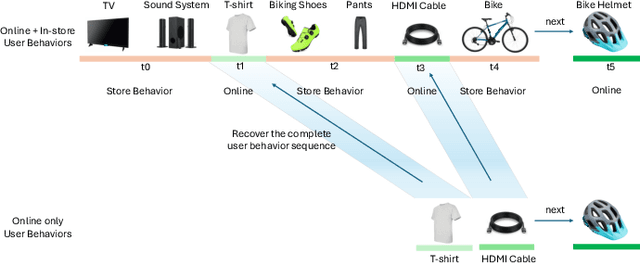
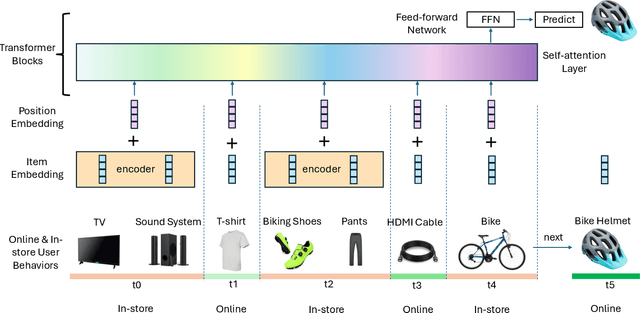
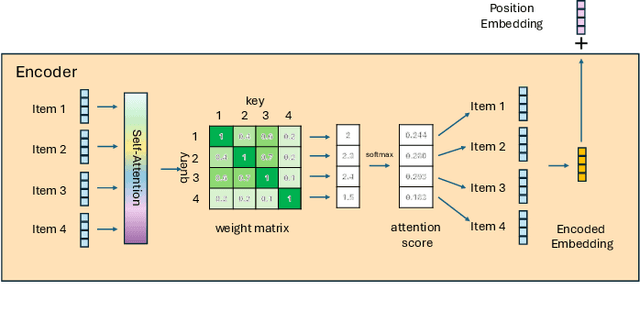

Abstract:Online e-commerce platforms have been extending in-store shopping, which allows users to keep the canonical online browsing and checkout experience while exploring in-store shopping. However, the growing transition between online and in-store becomes a challenge to sequential recommender systems for future online interaction prediction due to the lack of holistic modeling of hybrid user behaviors (online and in-store). The challenges are twofold. First, combining online and in-store user behavior data into a single data schema and supporting multiple stages in the model life cycle (pre-training, training, inference, etc.) organically needs a new data pipeline design. Second, online recommender systems, which solely rely on online user behavior sequences, must be redesigned to support online and in-store user data as input under the sequential modeling setting. To overcome the first challenge, we propose a hybrid, omnichannel data pipeline to compile online and in-store user behavior data by caching information from diverse data sources. Later, we introduce a model-agnostic encoder module to the sequential recommender system to interpret the user in-store transaction and augment the modeling capacity for better online interaction prediction given the hybrid user behavior.
Leveraging User-Generated Reviews for Recommender Systems with Dynamic Headers
Sep 11, 2024Abstract:E-commerce platforms have a vast catalog of items to cater to their customers' shopping interests. Most of these platforms assist their customers in the shopping process by offering optimized recommendation carousels, designed to help customers quickly locate their desired items. Many models have been proposed in academic literature to generate and enhance the ranking and recall set of items in these carousels. Conventionally, the accompanying carousel title text (header) of these carousels remains static. In most instances, a generic text such as "Items similar to your current viewing" is utilized. Fixed variations such as the inclusion of specific attributes "Other items from a similar seller" or "Items from a similar brand" in addition to "frequently bought together" or "considered together" are observed as well. This work proposes a novel approach to customize the header generation process of these carousels. Our work leverages user-generated reviews that lay focus on specific attributes (aspects) of an item that were favorably perceived by users during their interaction with the given item. We extract these aspects from reviews and train a graph neural network-based model under the framework of a conditional ranking task. We refer to our innovative methodology as Dynamic Text Snippets (DTS) which generates multiple header texts for an anchor item and its recall set. Our approach demonstrates the potential of utilizing user-generated reviews and presents a unique paradigm for exploring increasingly context-aware recommendation systems.
Chaining text-to-image and large language model: A novel approach for generating personalized e-commerce banners
Feb 28, 2024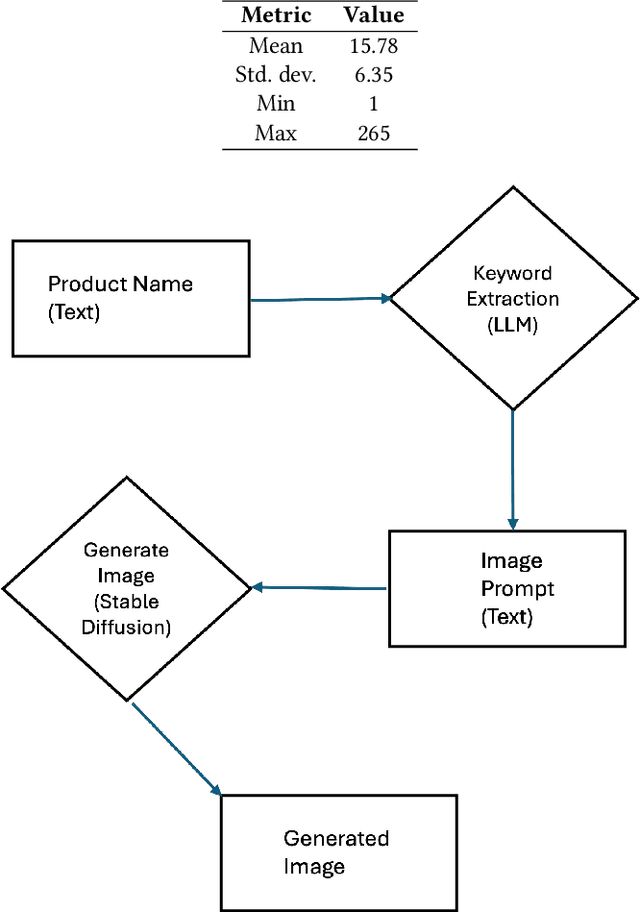


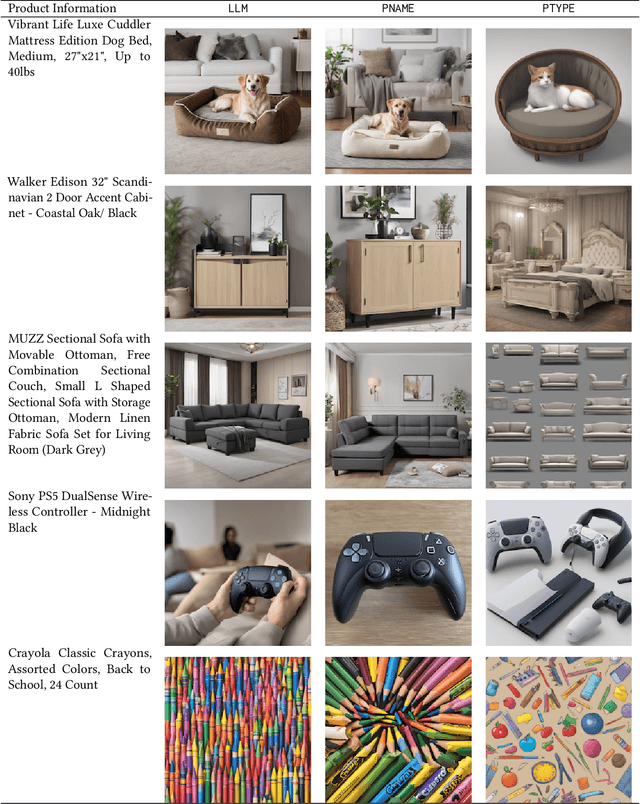
Abstract:Text-to-image models such as stable diffusion have opened a plethora of opportunities for generating art. Recent literature has surveyed the use of text-to-image models for enhancing the work of many creative artists. Many e-commerce platforms employ a manual process to generate the banners, which is time-consuming and has limitations of scalability. In this work, we demonstrate the use of text-to-image models for generating personalized web banners with dynamic content for online shoppers based on their interactions. The novelty in this approach lies in converting users' interaction data to meaningful prompts without human intervention. To this end, we utilize a large language model (LLM) to systematically extract a tuple of attributes from item meta-information. The attributes are then passed to a text-to-image model via prompt engineering to generate images for the banner. Our results show that the proposed approach can create high-quality personalized banners for users.
Seller-side Outcome Fairness in Online Marketplaces
Dec 06, 2023

Abstract:This paper aims to investigate and achieve seller-side fairness within online marketplaces, where many sellers and their items are not sufficiently exposed to customers in an e-commerce platform. This phenomenon raises concerns regarding the potential loss of revenue associated with less exposed items as well as less marketplace diversity. We introduce the notion of seller-side outcome fairness and build an optimization model to balance collected recommendation rewards and the fairness metric. We then propose a gradient-based data-driven algorithm based on the duality and bandit theory. Our numerical experiments on real e-commerce data sets show that our algorithm can lift seller fairness measures while not hurting metrics like collected Gross Merchandise Value (GMV) and total purchases.
 Add to Chrome
Add to Chrome Add to Firefox
Add to Firefox Add to Edge
Add to Edge